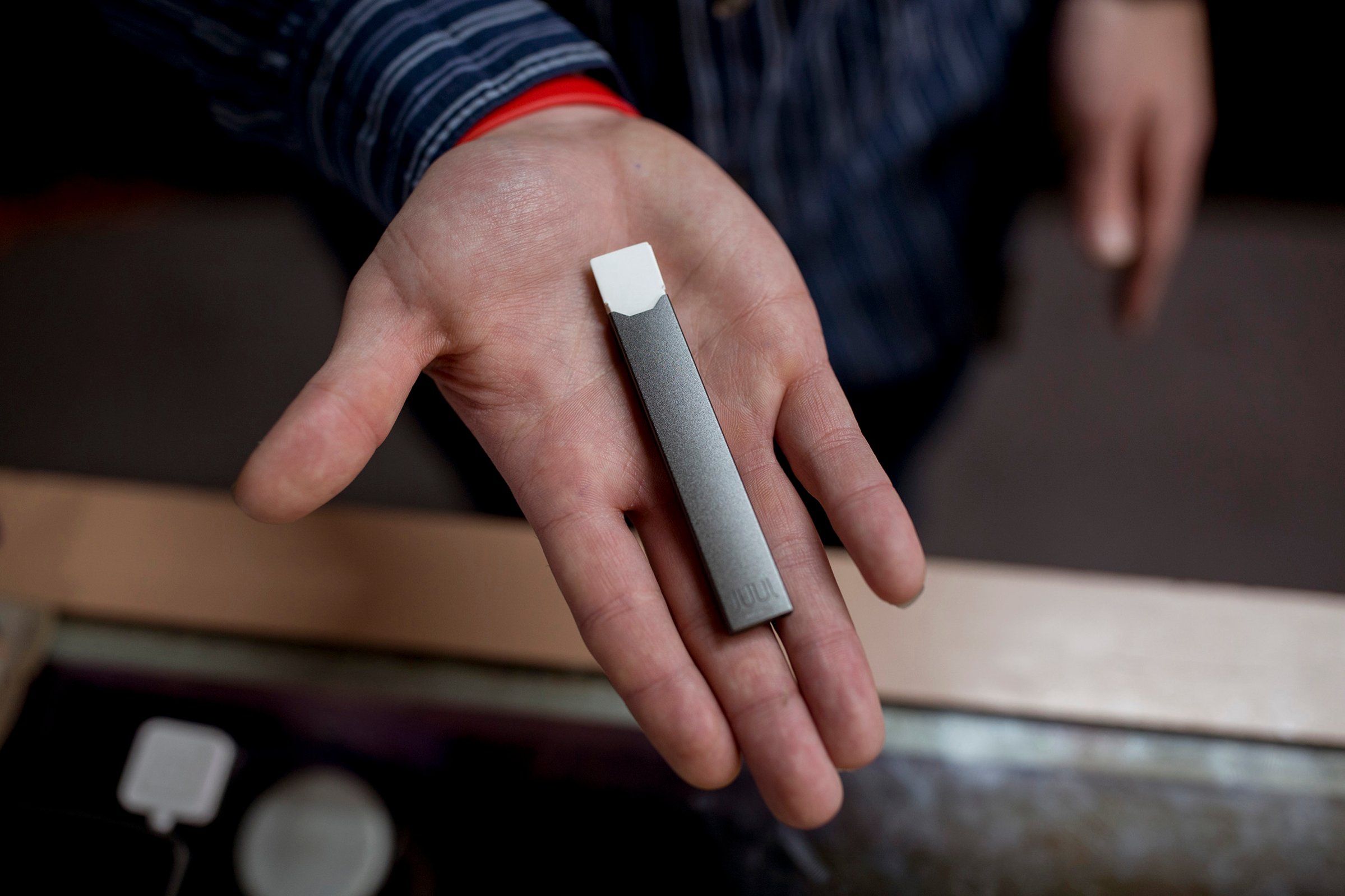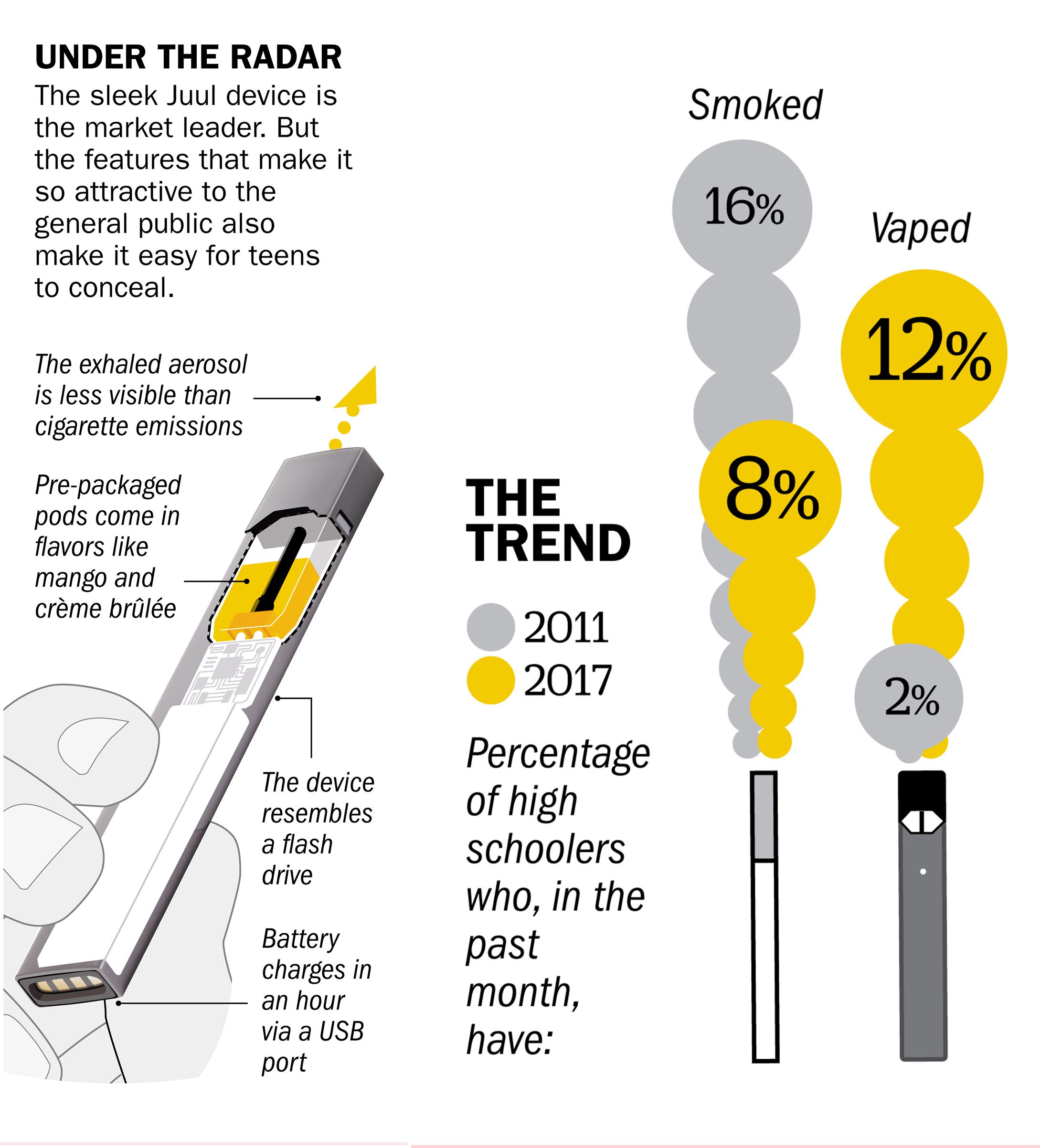
Smoking isn’t as cool as it used to be. The number of adult smokers in the U.S. is at an all-time low, according to new federal data, and a recent report from the Centers for Disease Control and Prevention says almost a million fewer middle and high school students used tobacco products in 2017 than in ’11.
But vaping–using a handheld vaporizer that draws on liquid typically packed with nicotine–is up, which raises new issues. At last count, 3.2% of U.S. adults (about 7.5 million) said they used e-cigarettes, and it’s even more common among teens. Nearly 12% of high schoolers vape; they especially favor Juul, the brand that dominates the U.S. market.
It’s still unclear whether e-cigs are safe. Their aerosols often contain fewer harmful chemicals than smoke from burned tobacco, but they may still expose users to toxins. Many contain addictive nicotine, and there’s conflicting research on whether they help smokers kick the habit. Some studies have also shown that kids who vape may be more likely to use other tobacco products.
The Food and Drug Administration has prioritized curtailing youth use. In April, the agency sent letters to retailers warning them against illegally selling vaping products to underage users and asked makers to submit information on marketing practices. Juul, which says its devices aren’t for minors, has pledged $30 million over three years to stem the flow of its product to teens. The risks from e-cigarettes remain unclear, but vaping is a trend that’s unlikely to flame out.

More Must-Reads From TIME
- The 100 Most Influential People of 2024
- Coco Gauff Is Playing for Herself Now
- Scenes From Pro-Palestinian Encampments Across U.S. Universities
- 6 Compliments That Land Every Time
- If You're Dating Right Now , You're Brave: Column
- The AI That Could Heal a Divided Internet
- Fallout Is a Brilliant Model for the Future of Video Game Adaptations
- Want Weekly Recs on What to Watch, Read, and More? Sign Up for Worth Your Time
Write to Jamie Ducharme at jamie.ducharme@time.com